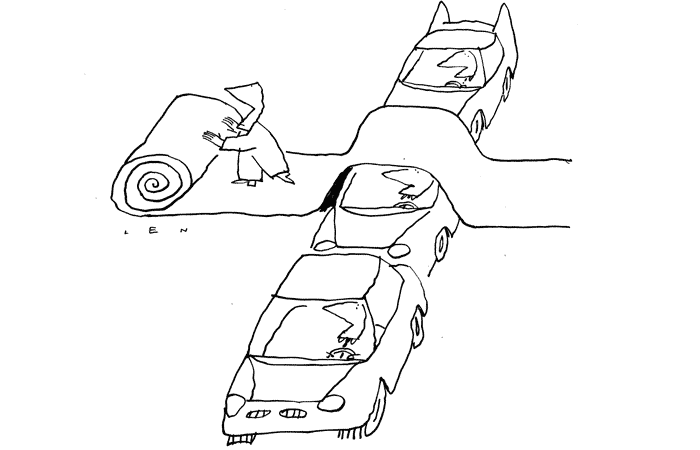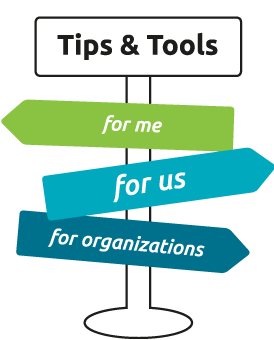Tips & Tools

For organizations
Governments
Education and health
Consumers and users
Businesses
Municipalities can ensure proper collection of complaints and ideas. A good example is the Dutch city of Utrecht. See: www.utrecht.nl/voetganger. Inhabitants were invited to make exact proposals for better walking. They are put on a map and the municipality gives public feedback.
Mayors can help bridge the gap between citizens, politicians and civil servants. If they support walking it can be great boon for all citizens.
In streets, parks or other places people sometimes have problems with dogs. Walker: "I train with a friend, we walk a lot, and I regularly encounter dogs. Usually not a burden, but sometimes they jump up to you .....". Dog lover: "I walked thirty years, often in an area with a group of dogs. Now dogs are no longer allowed to enter and for me this is the end of the fun".
In a Spatial Structure or Zoning Plan the local government plans the future. For various activities such a plan determines where they belong in the town or village. The plan can minimize distances so many people can walk easily from point A to point B. A network of pedestrian routes is included.
Each building plan or zoning proposal provides a quality check for the pedestrian. Essential in this are the needs of eight year olds and people in their eighties. When both are at home in the same area, it is suitable for all the others: Design for All. A good layout considers differences in speed. And offers spaces that are easily accessible, safe and good to use. For all, regardless of age, sex, health status or situation.
Laws, projects and financial plans dealing with urban and area development include standards. For appropriate distances and routes for walkers.
Follow the example of a group of citizens in the city of Gurgaon (India). Since 2013 they have been organizing a car free area on Sundays in some of the roads. Generous space is offered for safe walking, cycling and entertainment for half a day. This first car-free Sunday initiative has been an inspiration to other cities, like Bhopal and Mumbai.
In the US, in ten years the number of children walking to school rose thanks to a deliberate program. An increase of walking by 25 percent was seen in 17,000 participating schools with 7,8 million pupils. Teachers and parents supported the initiative for better routes, adequate information and increasing awareness of the possibilities: www.saferoutesinfo.org
Various sports clubs offer programs in the neighborhood in a safe area (www.sporttuin.nl), in cooperation with local schools. Each child can do their favourite activity. It is easy and economical for parents. Children walk in by themselves, parents can undertake other activities. Pupils are more fit and easier to manage. Even on Fridays when they could be tired or unruly. This resulted in less school dropouts and better adjusted youth.
In the design and maintenance of parks, squares and streets consider dogs. Create opportunities to exhaust them well: run, relieve, maybe splashing in water? Ensure that facilities are practical.
A single police officer on foot provides more trained eyes in streets, and is approachable for pedestrians. Often, the police force does not see one-person patrols as a priority. Those who serve as police consultants could give this input to the department.
Austria developed a multi-year plan in 2015: Masterplan Gehen. More money and attention is spent on identifying better routes and shorter walking distances. Besides money for paths the plan stimuletes more training and awareness among students, planners and administrators. Larger cities and small towns benefit. "Locally you need a few citizens or professionals who want better sidewalks or smart, safe short cuts'' says a planner. "Plus a motivated mayor." The goal of the plan, to keep the same number of people on foot, has been achieved! Now a new Masterplan aims to get more people walking in 2030: 20 percent of all the traffic instead of 17 percent now.
Make a list of the issues that students and parents report on routes to school. Check with them for the best solutions and how to resolve them. Fix simple issues directly by yourselves, notify other proposals to the responsible persons. Make sure you get feedback from them and that they let you know when the poblem is solved.
Secondary schools could consider following the example of teacher Theo Wismans, Charlemagne College in Landgraaf, Netherlands, near Germany. He was mentoring a class with a lot of problems.
Primary schools can make pupils self-reliant and encourage them to walk. Not as an extra lesson but in combination with 'moving', 'counting’ and other subjects.
Children love exploring streets, creating district plans, and identifying issues on the road and pavement.
Patients and visitors are informed about the more attractive routes in and outside healthcare buildings. First, routes are clarified on a map and described. Walks are mentioned in terms of time, steps or distance. Second, there can be a follow-up after getting feedback from patients, visitors and staff.
In all plans for new construction, renovation or alterations, thought must be given to quality of pathways. In complexes and their surroundings. There must be areas to walk, including benches or chairs. No narrow or dark corridors. Besides parking for cars and bicycles, walking routes near public transport are needed. Every building must include attractive and hassle-free staircases.
In many countries programs encourage people to walk together. Experienced volunteers and professionals ensure an environment for successful programs. In the short and long run.
Runners visit more places than many walkers. They are faster. As individuals or groups: formed by WhatsApp, twitter, Facebook, clubs or other community. They can detect and collate the obstacles for walkers. They can propose solutions to local authorities or walking advocacy groups. In this way, there is a double benefit: better training for the joggers or runners, and better routes for the walkers.
Cyclists and walkers are "slow" traffic and have much in common. They have partly equal interests. In some places, they are working closely together, being partners. For example, in the United States in the Pedbike infocenter and the The National Center for Bicycling and Walking. The German Cyclists Federation (ADFC) sometimes supports the banning of bicycles on sidewalks. In the Netherlands the MENSenSTRAAT (STREETforALL) network is promoting a good quality of public space, especially for walking and sojourning.
In Switzerland bicylists and walkers cooperate. In Lausanne the local pedestrians club works together with proVélo. The city of Zürich promotes eight golden rules for cyclists, after consultation. Walkers and cyclists can be advocates together. WandeInet in The Netherlands has joined projects with Dutch bicycling organisations, like the Fietsersbond (Cyclist`s Union).
Safetipin, an India based organization developed an app to check the safety of neighborhoods. This app is based on data collected in many parts of Delhi and other Indian cities. User opinions come together. The app tells if neighborhoods are safe or not.
Show beautiful squares and streets for pedestrians. This as an alternative for an exhibition of buildings with always beautiful models and images. Pedestrians will get more attention.
Consumer interest organizations could do more on testing for a good price / quality ratio. Around daily walking many products and services are now available, waiting to be tested. They can be part of consumer surveys and stimulate demand.
As a group you can follow a course on journalistic skills. Learning how to create publicity and support. How to tell nice stories on walking. And how to tackle medialogics.
CORONA PROOF. This story is a homage to walkability and the future of walking. But expert Derk van der Laan also presents a wake-up call. He writes about how your mind and body benefit from simple walking. How to save money and increase business opportunities; how governments define and encourage walking. How citizens take initiative. What needs to be done to get more attention to walking and sustain it. Buy the story, for yourself or as a present.
Joining forces in a federation, association or other partnership encourages walking. An effective network organization could put more attention on the needs of walkers and runners. At a national (or state) level such an initiative ensures daily walking on the agendas of governments, companies and the media. Often, setting up local groups is the start of a widespread movement.
More designers are creating good areas to walk. They find out exactly what people need for pleasant walking and sojourning. American architects Allan Jacobs and Elizabeth Macdonald, are an example.
Inside buildings, walking can be encouraged by creating attractive routes and beautiful stairwells. Elevators can be placed at the sides of buildings. The designer creates a natural flow to encourage more steps.
Shopkeepers can be innovative about walking trails. For instance, shopping managers can present walking routes: do a fashion trip or enjoy the beauty route. Shoppers can deposit their shopping and other belongings in a safe spot. So they can walk more. Or, people go to a mall, just for walking.
In the US, the National Business Group on Health stimulates physical movement through gaming. Teamwork is stimulated.
Bringing together expertise to balance the interests of both cyclists and walkers, is a challenge for designers. For example, speed can be slowed down in some bike trails. Or, the bike path could be somewhat lower than the walking path. This allows for separation. Sometimes a fence can be helpful as well.
Architects and investors can really get into what is important for citizens' ability to walk. Who makes in- en outdoor spaces suitable for 8-year and 80-year-olds? This results in a Design for All.
As a broker or real estate agent, you can give vital information on walking distances around the real estate you are selling. For example, the number of minutes or meters to several important and interesting destinations. See: www.walkscore.com
How many consumers walk at what location or on what route? How to seduce them to buy something? Important knowledge for retailers, leisure entrepreneurs and others. Sharing this expertise can stimulate also the citizen, in addition to the consumer, to do more steps.
The transport manager of the company can stimulate walking. An example is Arthur Orsini at the Coastal Health Hospital in Vancouver. He told his story on a Walk21 Conference.
Entrepreneurs can learn from Las Vegas. This paradise of gambling and tourism, was designed for cars. But the economy changed. Traffic had to adopt.
Business decisions can take into account walking options within daily work routines. It could be made possible for employees to make comfortable steps as a break, enjoying good staircases, having walking meetings. Can visitors easily reach the company, for example after a ride by public transport or by bike? Does travel expenses systems reward going on foot?
